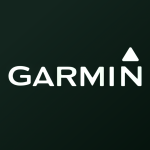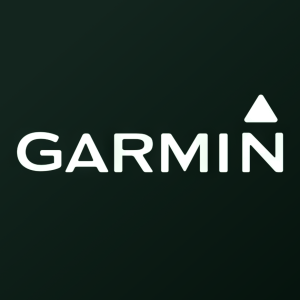Welcome to our dedicated page for Garmin SEC filings (Ticker: GRMN), a comprehensive resource for investors and traders seeking official regulatory documents including 10-K annual reports, 10-Q quarterly earnings, 8-K material events, and insider trading forms.
Garmin’s results aren’t driven by wearables alone—its flight decks, marine chartplotters, and Auto OEM integrations often swing margins investors track. If you need the revenue split across Fitness, Outdoor, Aviation, Marine, and Auto or want clarity on how currency moves reshape gross profit, the answers sit inside each SEC filing.
Here you’ll find every Garmin quarterly earnings report 10-Q filing, Garmin annual report 10-K simplified, Garmin 8-K material events explained, and the Garmin proxy statement executive compensation disclosure—all in one place. Our platform delivers Garmin SEC filings explained simply: AI-powered summaries highlight R&D spend behind the next Fenix launch, cash-flow shifts, and segment backlog so you grasp the story without combing through hundreds of pages.
Need live visibility into leadership moves? Stock Titan streams Garmin Form 4 insider transactions real-time, so you catch Garmin insider trading Form 4 transactions the moment they post. Use understanding Garmin SEC documents with AI to:
- Run Garmin earnings report filing analysis and compare quarter-over-quarter margins
- Monitor Garmin executive stock transactions Form 4 before key product announcements
- Review risk factors with Garmin annual report 10-K simplified for long-term perspective
All filings update seconds after EDGAR releases. Complex disclosures become clear, letting you make decisions faster and with confidence.
Garmin Ltd. (GRMN) � Form 4 insider transaction
Chief Financial Officer & Treasurer Douglas G. Boessen disclosed one open-market sale dated 3 July 2025. Acting under a Rule 10b5-1 trading plan adopted 3 March 2025, he disposed of 1,859 registered shares at $215 per share, generating roughly $0.4 million in gross proceeds.
After the sale, Boessen’s direct ownership stands at 29,146 shares. This total includes 17,947 unvested restricted stock units and 69 shares acquired through the June 2025 Employee Stock Purchase Plan. No derivative security activity was reported.
The transaction reduced his direct stake by about six percent but leaves him with a meaningful equity position. Because the sale occurred under a pre-arranged 10b5-1 plan, typical concern over insider selling is partially mitigated. The filing does not reveal any changes to corporate strategy, financial outlook, or executive roles.
Schedule 13G Overview � The Vanguard Group & Ralliant Corp (RAL)
On 30 June 2025, The Vanguard Group filed a Schedule 13G reporting passive beneficial ownership of Ralliant Corp’s common stock. Vanguard now controls 13,174,096 shares, representing 11.65 % of RAL’s outstanding shares. The filing is made under Rule 13d-1(b) because Vanguard is an SEC-registered investment adviser ("IA").
Voting vs. dispositive authority
- Sole voting power: 0 shares
- Shared voting power: 49,118 shares
- Sole dispositive power: 12,898,650 shares
- Shared dispositive power: 275,446 shares
While Vanguard has virtually no direct voting power, it retains the right to dispose of nearly all of the reported shares, indicating the holding is spread across indexed and managed funds that delegate voting to third parties or follow fund-level policies.
Implications for investors
- Crossing the 10 % threshold makes Vanguard a significant institutional holder, potentially increasing RAL’s visibility among passive and ETF-tracking investors.
- The passive 13G filing (rather than an activist 13D) signals no intention to influence control or strategy.
- Concentrated ownership may add liquidity support but could create share-supply risk if Vanguard trims its position.
The certification confirms the stake was acquired in the ordinary course of business and not to influence management. The document is signed by Ashley Grim, Head of Global Fund Administration, on 7 July 2025.
UBS AG (London Branch) is offering $235,000 of Trigger Autocallable Contingent Yield Notes linked to the common stock of NVIDIA Corporation (NVDA).
Key commercial terms
- Issue price: $10.00 per note; minimum purchase 100 notes.
- Trade date: 3 Jul 2025; maturity: 8 Jul 2027 (�2 years) unless called earlier.
- Contingent coupon: 15.26 % p.a. (�$0.2543 per $10 note) paid bimonthly only if the NVDA closing price on an observation date is � coupon barrier = $111.54 (70 % of initial level).
- Automatic call: triggered on any observation date (except final) if NVDA � initial level = $159.34. Holder then receives principal + coupon; no further payments.
- Principal at risk: if not called and final NVDA level � downside threshold = $111.54, investor receives full principal. If final level < threshold, repayment = $10 × (1 + underlying return); losses mirror NVDA decline and can reach 100 % of principal.
- Estimated initial value: $9.78, 2.2 % below issue price, reflecting fees and hedging costs.
- Secondary market: None assured; UBS Securities LLC may provide limited liquidity but may cease at any time.
Risk highlights
- Equity risk: exposure to NVDA share volatility; single-stock concentration increases idiosyncratic risk.
- Credit risk: payment obligations rely on UBS; noteholders rank as unsecured creditors.
- No guaranteed coupons; investors may receive little or no income.
- Potential loss of principal below downside threshold; contingent protection applies only at maturity.
- Liquidity and valuation risk: bid/offer spreads and lack of listing may result in material secondary-market discounts.
Investor profile: Suitable only for investors who (1) seek enhanced income, (2) can tolerate full downside exposure to NVDA below the 70 % barrier, (3) understand contingent coupon structures, and (4) are comfortable with UBS credit exposure and limited liquidity.


